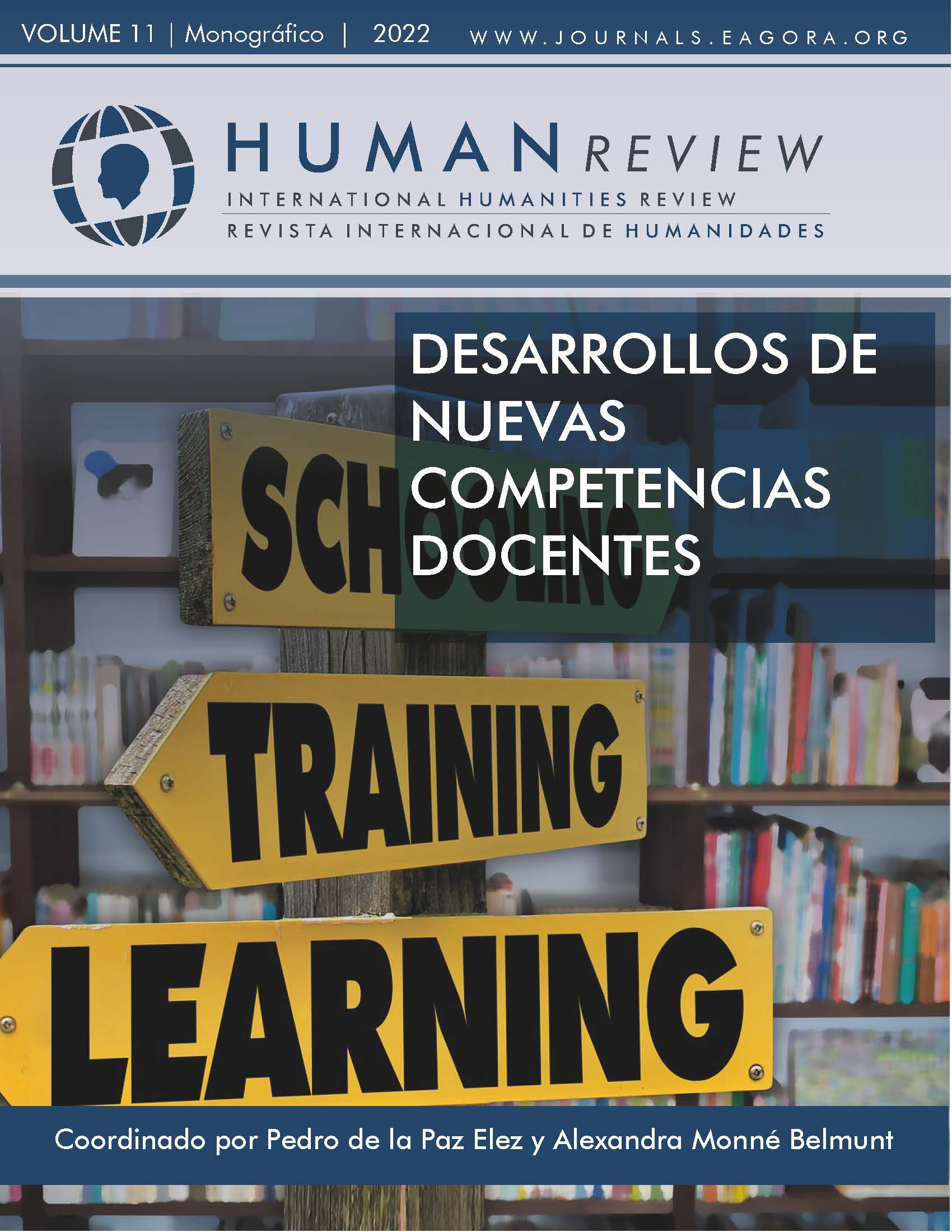Alternative sports and their influence on the students’ motivation
An experience in Secondary Education
DOI:
https://doi.org/10.37467/revhuman.v11.3844Keywords:
Alternative Sports, Traditional sports, Physical Education, Secondary Education, Motivation, Students, OpinionAbstract
The aim of this study was to compare the students’ motivation after practicing alternative (AS) and traditional sports (TS) and to know the teachers’ opinion regarding this experience. From the results, it stands out that, in the AS group, in- trinsic motivation increases and extrinsic motivation decreases, while the identified motivation in the TS decreases. Teachers positively valued the experience as active, dynamic, inclusive and motivating. Physical Education teachers should consider including AS in their programs given the significant increase in intrinsic motivation towards the subject by students and the opinions and benefits highlighted by parti- cipating teachers.
References
Cairney, J., Dudley, D., Kwan, M., Bulten, R., & Kriellaars, D. (2019). Physical literacy, physical activity and health: Toward an evidence-informed conceptual model. Sports Medicine, 49(3), 371-383. https://doi. org/10.1007/s40279-019-01063-3
Carrera, D. (2016). Como crear nuevos deportes desde la educación física. El aprendizaje por proyectos como estrategia práctica motivante. EmásF: revista digital de educación física, 38, 103-118.
Carrión, S., Hernández, A., & Martínez, I. (2019) El colpbol como un medio para incrementar la motivación en Educación Primaria. Retos, 36, 348-353. https://doi.org/10.47197/retos.v36i36.70396
Deci, E. L., & Ryan, R. M. (1985). Intrinsic motivation and self-determination in human behavior. Plenum Press.
Deci, E. & Ryan, R. (2000). The “what” and “why” of goal pursuits: human needs and the self-determination of behaviour. Psychological inquiry, 4, 227-268. https://doi.org/10.1207/S15327965PLI1104_01
Fernandez-Rio, J., Alcalá, D. H., & Perez-Pueyo, Á. (2018). Revisando los modelos pedagógicos en educación física. Ideas clave para incorporarlos al aula. Revista Española de Educación Física y Deportes, 423, 57-80. Recuperado de https://www.reefd.es/index.php/reefd/article/view/695
Ferriz, R., González-Cutre, D., & Balaguer-Giménez, J. (2020). Agentes sociales de la comunidad educativa, satisfacción de novedad y actividad física. Cultura, Ciencia y Deporte, 15(46), 519–528. http://dx.doi. org/10.12800/ccd.v15i46.1602
Feu, S. (2008). ¿Son los juegos deportivos alternativos una posibilidad para favorecer la coeducación en las clases de Educación Física? Campo Abierto, 2, 31-47
Fierro, S., Haro, A., & García, V. (2016). Los deportes alternativos en el ámbito educativo. E-motion. Revista de Educación, Motricidad e Investigación, 6,40-48.
García, M., & Baena-Extremera, A. (2017). Motivación en educación física a través de diferentes metodologías didácticas. Profesorado, Revista de Currículum y Formación del Profesorado, 21(1), 387-402.
González-Cutre, D., Jiménez-Loaisa, A., Abós, A., Ferriz, R. (2021). Estrategias motivacionales para incluir novedad y variedad en Educación Física. En L. García-González (Coord.), Cómo motivar en Educación Física: Aplicaciones prácticas para el profesorado desde la evidencia científica (pp. 99-116). Universidad de Zaragoza.
González-Cutre, D., & Sicilia, A. (2019). The importance of novelty satisfaction for multiple positive outcomes in physical education. European Physical Education Review, 25(3), 859-875. https://doi. org/10.1177/1356336X18783980
Hernández, J. (2007). El valor pedagógico de los deportes alternativos. Revista Digital, EFdeportes.com. Lecturas: Educación Física y deportes, 114. Recuperado de https://www.efdeportes.com/efd114/el-valor- pedagogico-de-los-deportes alternativos.htm
Hernández-Beltrán, V., Gámez-Calvo, L., & Gamonales, J. M. (2021). Unihoc como deporte alternativo en el ámbito educativo. e-Motion: Revista de Educación, Motricidad e Investigación, 16, 105-120. https://doi. org/10.33776/remo.v0i16.5193
Lara, A. J., & Cachón, J. (2010). Kinball: los deportes alternativos en la formación del/la docente de educación física. En II Congrés Internacional de Didàctiques. Girona.
Ley Orgánica 3/2020, de 29 de diciembre, por la que se modifica la Ley Orgánica 2/2006, de 3 de mayo, de Educación.
Lorenzo-Quiles, O. (2011). Análisis cualitativo de textos sobre multi e interculturalidad. Dedica. Revista de educação e humanidades, 1,535-546.
Manso-Lorenzo, V., Fraile-García, J., Cambronero-Resta, M., & Manso-Lorenzo, J. (2018). Goubak as an alternative sport of collaboration-opposition (regulated): didactic offer for Physical Education in Primary. ESHPA- Education, Sport, Health and Physical Activity, 2(3), 322-340. Recuperado de http://hdl.handle. net/10481/53155
Menescardi, C., Valverde-Esteve, T., & Lizandra, J. (2020). Deportes alternativos a través de edublogs: una experiencia con el futuro profesorado de Secundaria. En: Roig-Vila, Rosabel (Ed.), La docencia en la Enseñanza Superior. Nuevas aportaciones desde la investigación e innovación educativas (pp. 285-296). Barcelona: Octaedro.
Molinero, O.; Salguero del Valle, A.; Márquez, S. (2011). Autodeterminación y adherencia al ejercicio: estado de la cuestión. Revista Internacional de Ciencias del Deporte, 25(7), 287-304. https://doi.org/10.5232/ ricyde2011.02504
Moreno, J. A., González-Cutre, D., & Chillón, M. (2009). Preliminary validation in Spanish of a scale designed to measure motivation in physical education classes: the Perceived Locus of Causality (PLOC) Scale. The Spanish Journal of Psychology, 12(1), 327-337. https://doi.org/10.1017/s1138741600001724
Moreno, J. A., & Cervelló, E. (2010). Motivación en la actividad física y el deporte. Wanceulen Editorial.
Moreno, J. A., & Hellín, M. G. (2007). El interés del alumnado de Educación Secundaria Obligatoria hacia la Educación Física. Revista Electrónica de Investigación Educativa, 9(2). Recuperado de: http://redie.uabc. mx/vol9no2/contenido-moreno.html
Requena, O. (2008). Juegos alternativos en educación física: flag football. Revista Digital Innovación y Experiencias Educativas, 4, 1-10.
Rivera, J. M., & Arras-Vota, A. M. G. (2015). Educación física y la “alfabetización física”. En J. Tarago, G. Mendoza, L.A. Fierro, & G. Ascensio (Coords.), Aproximaciones teórico-conceptuales y metodológicas en investigación educativa (pp. 40-49). México: Universidad Autónoma de Chihuahua.
Rodríguez, J. (2009). Tchoukball. Un deporte de equipo novedoso: propuesta de aplicación en Secundaria. Retos: nuevas tendencias en educación física, deporte y recreación, 16, 75-79. Disponible en https://www. redalyc.org/articulo.oa?id=345732281015
Soriano, J. (2012). Estudio cuasi-experimental sobre las terapias de relajación en pacientes con ansiedad. Revista electrónica Enfermería Global, 26, 39-53. https://dx.doi.org/10.4321/S1695-61412012000200004
Sparkes, A. (1992). Reflexiones sobre las posibilidades y los problemas del proceso de cambio en la Educación Física. En J. Devís y C. Peiró (Eds.), Nuevas perspectivas curriculares en Educación Física: la salud y los juegos modificados (pp. 251-266). Inde.
Downloads
Published
How to Cite
Issue
Section
License
Those authors who publish in this journal accept the following terms:
- Authors will keep the moral right of the work and they will transfer the commercial rights.
- After 1 year from publication, the work shall thereafter be open access online on our website, but will retain copyright.
- In the event that the authors wish to assign an Creative Commons (CC) license, they may request it by writing to publishing@eagora.org









